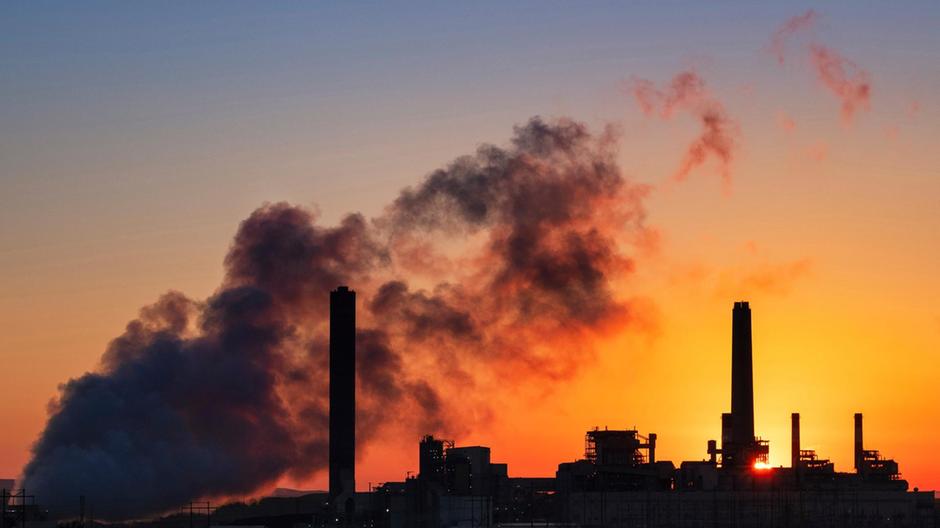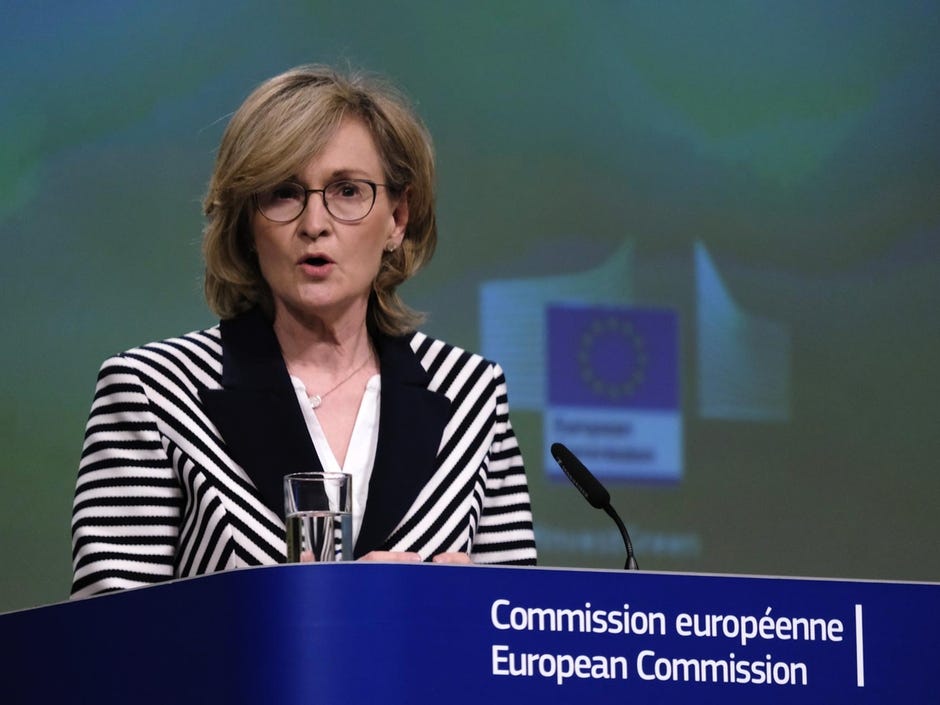Do countries need a system to distinguish ‘green’ from ‘greenwash’?

A coal-fired power plant in Wyoming, US. More than 300 businesses and investors are calling on the Biden administration to set a climate change goal to cut US greenhouse gas by at least 50% below 2005 levels by 2030. AP
Taxonomy, the author Bill Bryson once said, is sometimes described as a science and sometimes as an art, but really it is a battleground. European policymakers would probably agree as they struggle to label economic activity by means of an ambitious green “taxonomy”.
Just days ago, the European Commission published a second draft of its landmark classification system, but tellingly, it was incomplete. Europe remains divided over how to classify energy sources such as natural gas and nuclear power.
Those big, problematic issues have been shunted off to a later date, to be dealt with after the summer. But there is no guarantee of a quick resolution on what is green and what is not. Even the draft document’s inclusion of forestry and bioenergy as forms of green economic activity is controversial.
Thirteen months from the first version of its green taxonomy, the only classification Europe seems able to agree on is difficult. Does it even matter? Yes, in the sense that Europe’s labelling effort is the first by a leading regulatory body to create a green gold standard for investment.
Unlike the green bond catalogue issued by the People’s Bank of China in 2015, which is often referred to as China’s taxonomy, Europe’s version highlights climate change and specifies detailed measurements on carbon emissions. Europe’s taxonomy would also be more accessible than China’s.
Not too long ago, the Organisation for Economic Co-operation and Development noted that: “there is no official translation of the catalogue into English as yet”. Accordingly, a European benchmark for sustainable financial products would fill an obvious gap.
By setting out clear guidelines for green financial products, Europe would stamp out the tendency of funds and banks to “greenwash”. The taxonomy could greenlight the flow of billions of euros into financial products that help nurture the planet rather than poison it.
A ‘fifty shades of green’ approach has been suggested by the UN special envoy on climate action
At the very least, a green classification system would slow investment in economic activity that actively harms the environment and boosts sustainable finance in Europe. At full tilt, the green gold standard could serve as a global template for how to harness financial rules for environmental ends. After all, Britain, Canada and Mexico are each thinking of developing their own green taxonomy.
During his Brussels visit last month, US climate envoy John Kerry also expressed interest in developing sustainable finance standards for investors. However, as with data privacy, food safety and chemicals, Brussels could become the world’s de facto rule-setter on what counts as green simply by becoming the first to regulate.
But as things stand, the taxonomy remains a work in progress and there is no certainty of success. Germany and several eastern European countries are adamant that natural gas be included. France and the Czech Republic want nuclear technology. Finland and Sweden see the bioenergy fuels from forestry as important.
Environmental NGOs and groups such as the European Consumer Organisation are complaining that the taxonomy itself is becoming an exercise in greenwashing. And Mairead McGuinness, the EU commissioner for financial services, has been forced to admit that the bloc is trying to balance climate change science with “the real world” and that the taxonomy will continue to evolve.

None of this is particularly surprising. A lot is at stake, with the taxonomy set to cover 40 per cent of the EU economy. It is not just EU member states that are pushing their own interests, financial firms and trade groups are lobbying for weaker disclosure rules and carve-outs.
In the circumstances, it may be difficult to get the sort of clarity that asset managers might need to develop investment products in line with Environmental, Social and Corporate Governance criteria.
In that case, how credible would a green taxonomy be? Some experts say the intellectual tidiness of a taxonomy does not really suit issues around decarbonisation that are contentious, economically significant and often emotionally fraught. They have a point. Second-hand goods potentially illustrate the inherent problems in a system of rigid classification.
Eurefas, a newly formed European lobbying group, which seeks to represent companies that deal with refurbished products, is arguing that refurbished furniture, bicycles, computer or network hardware, pianos, toys and other consumer products promote the circular economy and should be part of the European Green Deal for climate neutrality in 2050. But what if a new product has a lower carbon footprint than the process of refurbishing something? In that case, would the refurb really be that green?
Instead of a green taxonomy, economist Mark Carney, currently UN special envoy on climate action, has suggested a “fifty shades of green” approach. This, he says, would encourage “the transition, to take things from brown towards green”. What this would mean is measuring a company’s green ambition against its transformative endeavours towards sustainability.
It would not be enough for a company to use carbon offsets — planting trees and suchlike — to compensate for emissions activities. It would also have to formulate and follow a plan for cutting those activities, embracing renewable energy sources and sustainable practices and eventually getting to carbon zero.

Such gradualism will not suit the impassioned, nor the purists, who demand immediate bold action. But there is much to be said for a broader, more creative view of how to move to decarbonisation.
A good example may be the movement on Pakistan’s coal plants, which are being financed or built by Chinese companies in the China-Pakistan economic corridor.
Pakistan has said it wants to move away from coal. China, which has withdrawn from a coal project in Bangladesh, is also indicating it wants to rethink coal financing. Might it be possible for a multilateral consortium to invest in Pakistan’s renewable energy sector? The project would not be totally green rightaway but a shade of green. In the end perhaps, it doesn’t matter how you classify it.
Rashmee Roshan Lall is a columnist for The National
Originally published at https://www.thenationalnews.com

